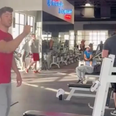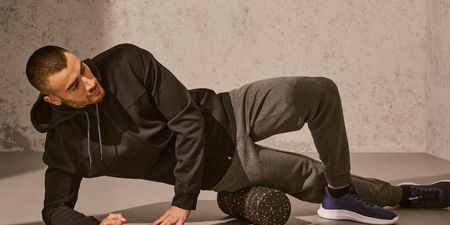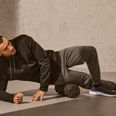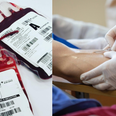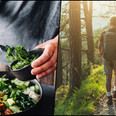
In this week’s column, fitness expert Bogdan Merkes outlines the Bulls-Eye Bod regime, -and tells us that everyone from average Joe to high performance athlete can glean significant reward from the BEB programme.
The Bulls Eye Bod – so what is it?
BODY: a physique to blast through your plateau
EXPERIENCE: the end of feeling fatigued, sluggish and bogged down
BUILD: a lean mean fat-shredding muscle-sculpting machine
Intro
You should target physiological demands with an approach that is not the latest “diet” or Hollywood trend, but a well-established concept that encompasses a nutritional and lifestyle method focused on enhancing sports performance and achieving an overall sense of well-being.
From the average Joe to high performance athletes, all groups can glean significant reward from following the BEB programme, which promises to sculpt you into a super-human calorie furnace and a leaner meaner machine.
Is your body getting the right nutrition?
As a trainer, I’ve observed a considerable lack of knowledge amongst clients when it comes to selecting the correct foods. Some believe that knocking back shakes or consuming solely protein is the way to go. Others fear fats or become preoccupied by strict calorie guides. Let me tell you, this is ridiculous.
It seems to me that the most noticeable impediment to adhering to good nutrition seems to be a deficit in understanding the role of specific foods. Well, pay attention all you crazy dieters, this could help tremendously!
Q: Why do we need food?
Calories. These are tiny units of energy that your body uses in order to do work.
Q: What types of food contain kcalories?
All types.
Carbohydrates provide 4 kcal/gram, protein 4 kcal/gram, and fat a startling 9 kcal/gram. Thus it becomes strikingly apparently that fats, despite the bad rep, provide more than double the energy of carbs or protein. Similarly carbs, although widely acclaimed as the serial dieter’s Achilles Heel, will always be required by the body. Fats burn in a carbohydrate flame so that without carbohydrates, our body can’t efficiently sizzle down those wobbly bits.
Metabolism
Metabolism is the sum of all biochemical processes that occur in the body. There are two directions: anabolism is the formation of larger molecules; catabolism is the breakdown of larger molecules into smaller molecules. Aerobic metabolism includes oxygen in the processes; anaerobic metabolism takes place without sufficient oxygen. A metabolite is a product of metabolism. That means that anything made in the body is a metabolite.
The body’s rate of energy is called the metabolic rate. Your basal metabolic rate (BMR) is the number of calories expended to maintain essential processes such as breathing and organ function during sleep. However, most methods measure the rest metabolic rate (RMR) which is the number of calories burned over 24 hours while lying down but not sleeping.
Your essentials : 1 – Macronutrients
Carbohydrates:
Glucose is a simple carbohydrate that your body stores in the muscles and liver in the form of glycogen. Glycogen can be thought of as a string of glucose molecules linked together by chemical bonds which serve to fuel most of the body’s cells to carry out basic functions. Glycogen is important for supplying the vital organs, especially the brain, muscles and sexual organs with readily available energy.
If the body has insufficient supplies of glycogen and needs energy fast, it shifts to muscle to replenish blood glucose levels.
That’s right, if you’re not eating enough carbohydrates, your body will start breaking down precious muscle tissue for glucose. This underlies the mechanism behind crash diets whereby an individual limits carbohydrates and observes a welcomed dip on the scales, not realising, however, that this weight loss is from breakdown of muscle rather than the desired fat loss.
Protein:
Amino acids are the building blocks of proteins. Just as many glucose molecules make up glycogen, amino acids make up proteins. They are involved in growing, repairing and regenerating tissue, which makes them the building blocks of body structures.
When speaking of proteins, the term nitrogen balance is usually thrown on the table. This refers to protein synthesis and degradation in the body. If the body synthesizes more than it degrades and exogenous protein sources are supplied by ingestion, you have a positive nitrogen balance and thus build muscle. Conversely, if muscle degradation exceeds synthesis, as is the case in injury, fever or starvation, the body is said to be in a state of negative nitrogen balance. This is more commonly referred to as a catabolic state.
Ultimately, you cannot grow if your body is in a catabolic state. An anabolic state refers to a growing state of the body in which energy is used to build up body compounds.
Fats:
Fats are our main energy source. Believe it or not, fat combines with glucose for energy in order to spare the breakdown of protein. This allows protein to focus on its own job i.e. to make more muscle!
Saturated fats should be avoided because excessively high intake can lead to heart disease and high cholesterol. Also, because of its chemical composition, saturated fats are never very efficiently metabolised.
Unsaturated fats are the good fats that are easier for your body to breakdown. Some act as antioxidants and many actually aid in losing stored fatty tissue in the body.
One easy way to tell the difference between saturated and unsaturated fats is that saturated fats are solids at room temperature (lard and animal fat) and unsaturated fats are liquids at room temperature (oils)
Water:
Water is essential for all energy production in the body. It is required for thermo-regulation, cleansing the body of toxins and is essential to the function of each individual body cell. Inadequate supply of water can result in a 30% reduction of energy. Between 50% and 70% of body weight is water without which we cannot survive much longer than a week.
Your essentials: 2 – Micronutrients
Vitamins:
Vitamins are required in small amounts for growth, health and physical well-being. Many form the essential parts of enzyme systems that are involved in energy production and exercise performance. Others are involved in the functioning of the immune system, the hormonal system and the nervous system. Our bodies are unable to make vitamins so they must be supplied in our diet.
Nomenclature of main vitamins: A, B1, B2, B3, B5, B6, B7, B9, B12, C, D, E, K
Minerals:
Minerals are inorganic elements that have many regulatory and structural roles in the body. Some (such as calcium and phosphorus) form part of the structure of bones and teeth. Others are involved in controlling the fluid balance in tissues muscle contraction, nerve function, enzyme secretion and the formation of red blood cells. Like vitamins, they cannot be made in the body and must be obtained in the diet.
To name but a few minerals: Calcium, Sodium, Potassium, Magnesium, Phosphorus, Iron, Zinc etc.
Now, to put it into practice. Here’s the BEB suggested approach to your daily nutrition essentials:
1. Breakfast: RE-IGNITION
This is your opportunity to fuel your body with targeted nourishment. I don’t mean stuffing your face with pancakes and syrup but a good balance of your macronutrients. Here’s a quick recipe for an easy omelette that goes down a treat packed with lots of goodness. So get your body right first thing when you get up!
Ingredients:
5 egg whites (include 2 yolks)
Handful of spinach
¼ Avocado finely sliced
6 Cherry tomatoes half sliced
2 tablespoons of sundried tomato pesto
Method:
Scramble the egg whites and yolk and pour into a good non-stick omelette pan. flip the omelette over after one side is done and spread the ingredients on 1/2 of the omelette. When the bottom is cooked, fold the omelette in half and serve.
2. Morning snack: TOP UP
As the body remains fasted overnight, your morning re-ignition breakfast probably still hasn’t satisfied it’s nutritional demands, so replenish it with a winning combination of anti-oxidants and low fat pro-biotic dairy.
150ml Probiotic natural yoghurt
Mix in 75g Blueberries, 75g Raspberries, and handful of goji berries.
3. Lunch: METABOLIC STRESS BUSTER
Most of us spend our time at lunch taking a break from that pent up stress at work, attempting to squeeze in a quick nibble before resuming position at the desk. Do yourself a favour and get the right nutrients to fight these stresses. Avoid the blood sugar spiking goodies and go for a low GI option such as this quinoa, packed into an easy-to-make and filling lunch salad.
Ingredients:
1 handful spinach
1 handful lettuce
1 handful of walnuts
1 grated carrot
100g steamed quinoa
Vinaigrette dressing
4. Evening snack or post training: LEAN AND MEAN
You suddenly find yourself in the weight room after work and realise you need to maximise recovery for those hard-working muscles. Aid utilisation of proteins with a high protein, smart carb and fat smoothie.
Strawberry-Banana Supercharger
1 ripe banana
Frozen strawberries
Frozen raspberries
Baby spinach
Flax oil (you can’t taste it, trust me!)
Cashew butter
Chocolate protein powder
2 cups almond milk
5. Dinner: SOLIDIFY THAT PHYSIQUE
Feeling exhausted from a particularly demanding day at work, overcome the desire to order-in and whip up this yummy chilli. You’re on to a winner here, saving money and your body. Stay in control by knowing exactly what you’re eating but every now and again you can afford to be a little cheeky by opting for a supermarket-ready sauce.
Ingredients:
300g minced beef
450 ml chilli con carne sauce (go hot here to stimulate and turbo charge your metabolism but make sure to avoid the more sugary supermarket sauces)
100g baby sweetcorn
100g sugar snap pees
100g sweet potatoes
Method:
Lightly brown mince in a pan then add your favourite chosen sauce. In the meantime have a steamer ready to steam the vegetables. Wash skin potatoes (leave skin on) with the rest of the vegetables and then cut in small cubes. Add to steamer and steam for 10 minutes or so. When the vegetables are steamed you are ready to bring your chilli off the simmer. Use the vegetables as a bed and go on spoil yourself and enjoy a nice quantity of your muscle building mince.
Conclusion:
Incorporating these delicious and inspiring meals and snacks into your lifestyle is key to living by the BEB programme. By targeting the body’s precise nutrient requirements throughout the day, as described above, we are capable of functioning at an elite level. The focus here is being the best that we can be as individuals. Each human being is differentiated from another by genetic make-up and although this implies different abilities to digest, absorb and utilise certain nutrients, the basic requirements and physiology pervade through all races. A carefully proportioned balance of macro- and micronutrients targeted to our physiologic requirements, whether our lifestyles are predominantly sedentary or active, will ultimately help each of us achieve whatever goals and targets we aspire to.
Bogdan Merkes is writing a column every Wednesday until the end of September. If you want to learn more about his services check out ultimatefitcrew.com or like his page on Facebook. Check out more articles from Bogdan on his blog at bogdanmerkes.com, and you can also follow him on Twitter. All comments/questions/suggestions gratefully accepted.
LISTEN: You Must Be Jokin’ with Aideen McQueen – Faith healers, Coolock craic and Gigging as Gaeilge







